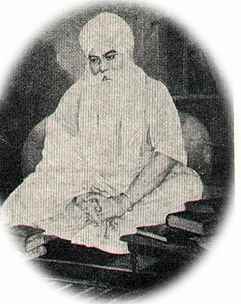

The first and oldest of the two Nirankari groups.These Nirankaris trace their beginnings to Baba.Dyal (1783 1855), who endeavoured to reclaim the Sil:hs of the Rawalpindi area from the temptations associated with military tri-umphs under Maharaja Ranjit Singh. Because the movement wasconfined to the Rawalpindi area, its followers were mainly Khatris and Aroras by caste. At the partition of India in 1947, the Nirankaris abandoned their centre in Rawalpindi and established themselves on the Indian side of the border in Chandigarh, from where their activities are administered to the present day.
The name 'Nirankari' arose because of the stress that Baba Dayal laid on the formless quality of Akal Purakh (nirakar or nirankar). According to him, the Sikhs were increasingly being seduced by the military glories and economic opportunities of Ranjit Singh's time, and were neglecting their duty to remember Akal Puralth through the practice of nam simaran. His duty was therefore to preach the message of liberation through the divine Name and to insist upon nam simaran as the one effective means. External aids to worship were, as Guru Nanak had so clearly taught, a positive obstruction to meditation. Worship should be strictly within the mind and nam simran, was the method to follow.
Baba Dayal left his Nirankaris with a brief manual of instruction.Understandably this is not called a rahit-nama as most members of the sect were not Khalsa Sikhs and so not bound to observe any Rahit.The manual is, somewhat confusingly, called a hukam-nama in that its format and contents are modelled on a rahjt-nama and do not resemble what Sikhs refer to as a hukam-nama; Its content is strictly Nanak-panthi, by which is meant that it upholds the teachings of Guru Nanak without mentioning the Khalsa of Guru Gobind Singh. The essence of the Nirankari Hukam-nama is contained in the words which every adherent is commanded to utter again and again: "dhan dhan nirankar, 'Glory, be to Nirankar'.
Baba Dayal was himself a Sahaj-dhari Sikh, as were most (though not all) of his followers, and the important thing was to dedicate one's life to the practice of nam simaran. This did not mean, though, that his followers were expected to give up their occupations and retreat into a life of renunciation. Nirankaris were typically traders and shopkeepers, and these occupations they were expected to continue while focusing their attention on remembrance of the divine Name.

Later, under the influence of the Singh Sabha movement, many of them adopted the Khalsa insignia, but the Nirankari philosophy retained its Nanak-panthi character, still attracting a substantial number of adherents who identified as Sahaj-dhari Sikhs, as Hindus or as both. In the Singh Sabha controversies, the movement was clearly aligned with the Sanatan Sikhs rather than with the Tat Khalsa.
The stress that the Nirankaris lay upon nam simaran certainly does not quality them to be regarded as heretics, nor does their reverence for the Sikh scripture. Their most serious fault in the eyes of the orthodox Khalsa lies in their acknowledgement of a continuing line of Gurus descending from Baba Dayal. In this respect the Nirankaris do not question the historic line of Gurus from Nanak to Gobind Singh, and they do not claim any connection with it beyond the beliefs they share with all Sikhs. Baba Dayal preached renewal, and it is for constant renewal in their Sikh faith that the adherents of the movement maintain their faith in the line of Gurus descending from him.
Confronted by this doctrine, an orthodox Sikh of the Khalsa would have to conclude that the Nirankaris were strictly heretical, and some might well have difficulty in regarding them as fellow-Sikhs. Such patent heresy is, however, accompanied by a conspicuous dedication to other features of the Silth tradition and many more would give them the benefit of the doubt. Principal Teja Singh was clearly speaking for the Tat Khalsa when he declared that the differences were 'already obliterated almost completely'. During the Singh Sabha controversies, the Nirank-aris were actually of considerable assistance to the Tat Khalsa in that they provided by their example the Anand marriage ceremony, which the reformers adopted. The extent of their heretical behavior can be judged from the fact that Jodh Singh, a prominent Tat Khalsa re-former, married his son to a daughter of the Nirankari Guru. Clearly their message was not far out of line with that of the true Khalsa.